
[050] Berberis darwinii and others, Barberry
Introduction
Berberis darwinii, Darwin’s Barberry; Berberis dictyophylla, Netleaf Barberry; Berberis julianae, Wintergreen Barberry or Chinese Barberry; Berberis thunbergii, Japanese Barberry; and Berberis verruculosa, Warty Barberry are five similar species widely cultivated as small shrubs or hedges for their attractive flowers and berries.
While the common names may be used, as cultivated plants they are normally just called Berberis in the UK.
My pictures may be mostly Darwin’s Barberry but this post is about all the cultivated varieties.
Taxonomy
Kingdom – Plants
Division – Vascular Plants
Class – Angiosperms (Flowering Plants)
Order – Ranunculales
Family – Berberidaceae
Genus – Berberis (Barberries)
Scientific Name – as listed
Many cultivated varieties are available.
Name
Unusually the common name comes from the Latin name for the plant, berberis. At least one species of this large genus is native to Southern Europe so it was well-known to the Romans.
Species names are as follows’
- Darwinii – named after the famous Charles Darwin.
- Dictyophylla – ‘net-leaf.’
- Julianae – named after a woman called Julian or Juliana
- Thunbergii – named after a Swedish naturalist.
- Verruculosa – warty.
Description
The plant is fairly unnoticeable with its small, dark green leaves. Some have spines and sharp leaves.
They produce attractive yellow flowers in large inflorescences.

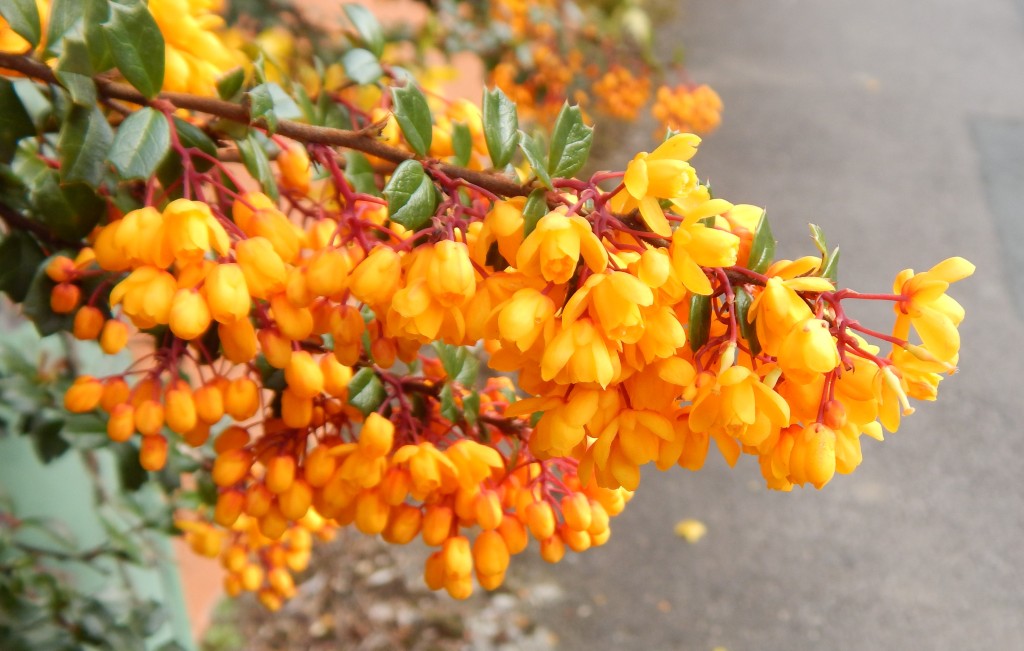

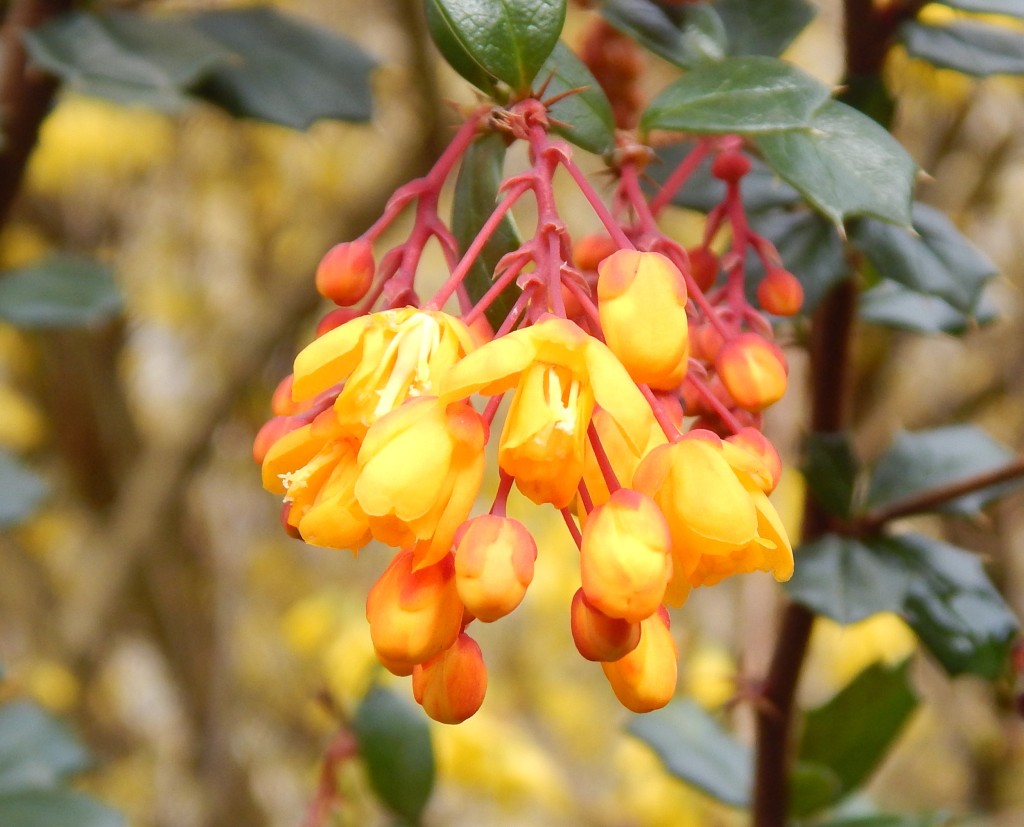
The fruits are small berries, either red or dark blue.
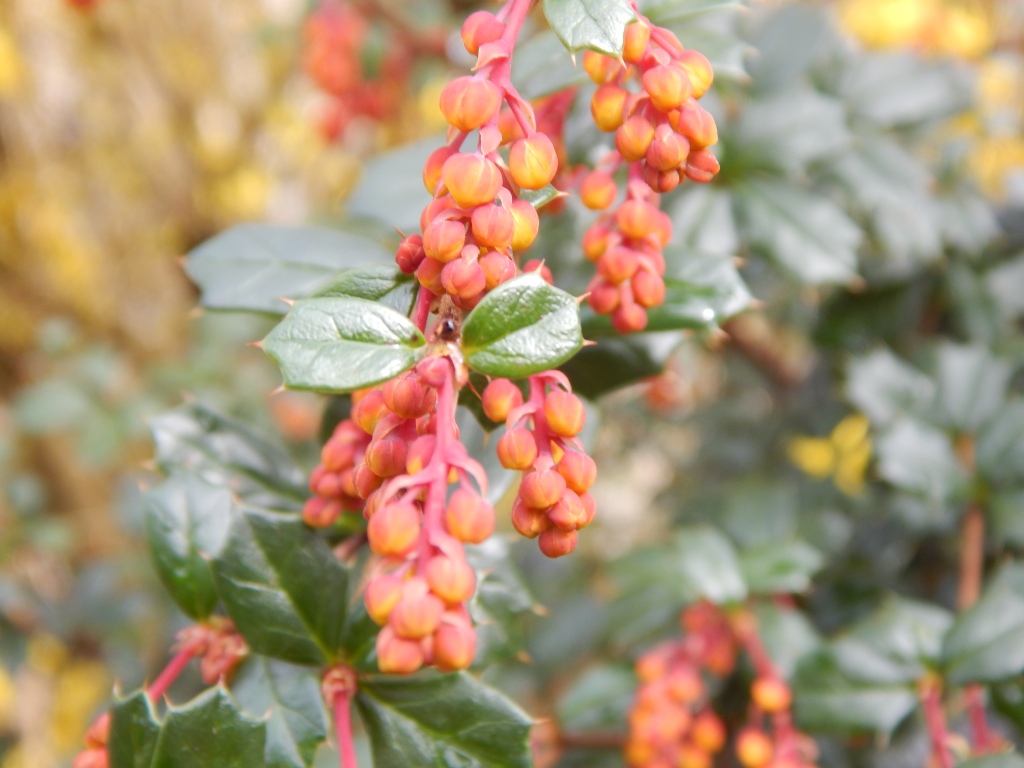
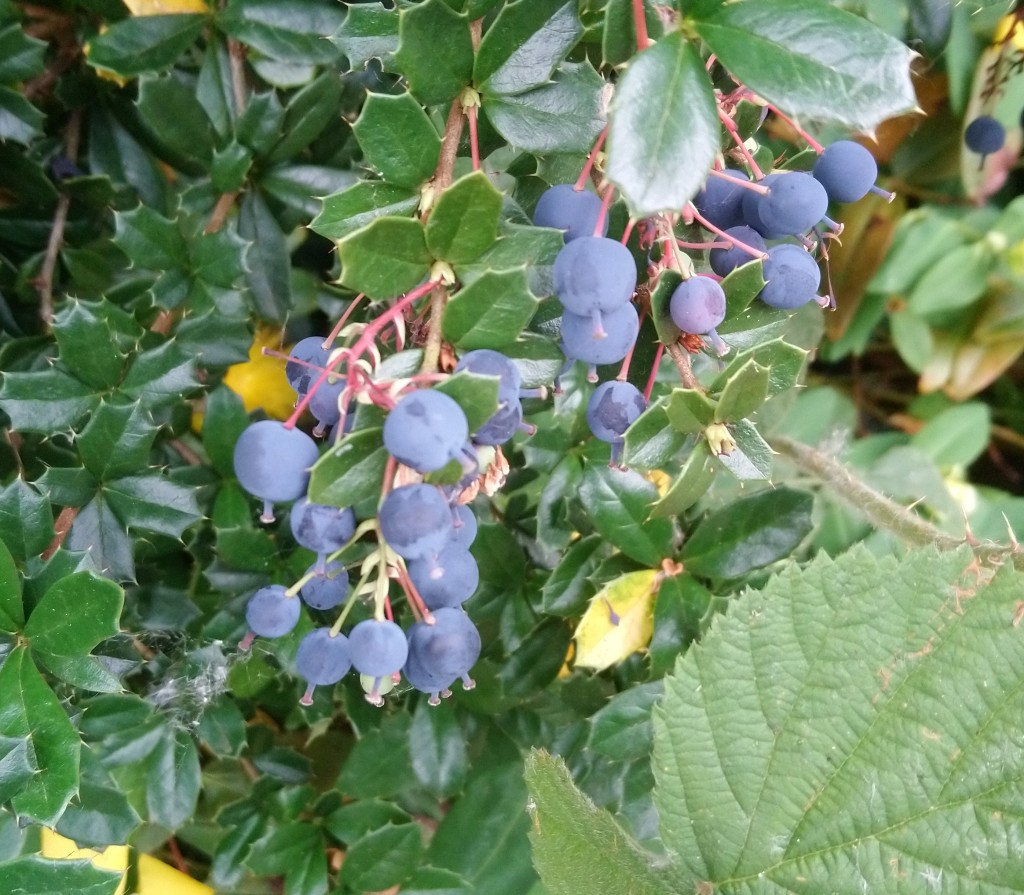
Netleaf Barberry and Japanese Barberry are deciduous. The other three are evergreen.
Habitat and use
Darwin’s Barberry is native to Southern South America; Japanese Barberry is from Japan; and the other three are from China. All have been grown as cultivated plants in other countries and some have naturalised in places.
It can be planted as a shrub but is often planted as a hedge because of its spines and attractive plants. Wikipedia suggests they are useful in crime prevention as they are ‘dense and viciously spiny.’ Some varieties have attractive coloured leaves.
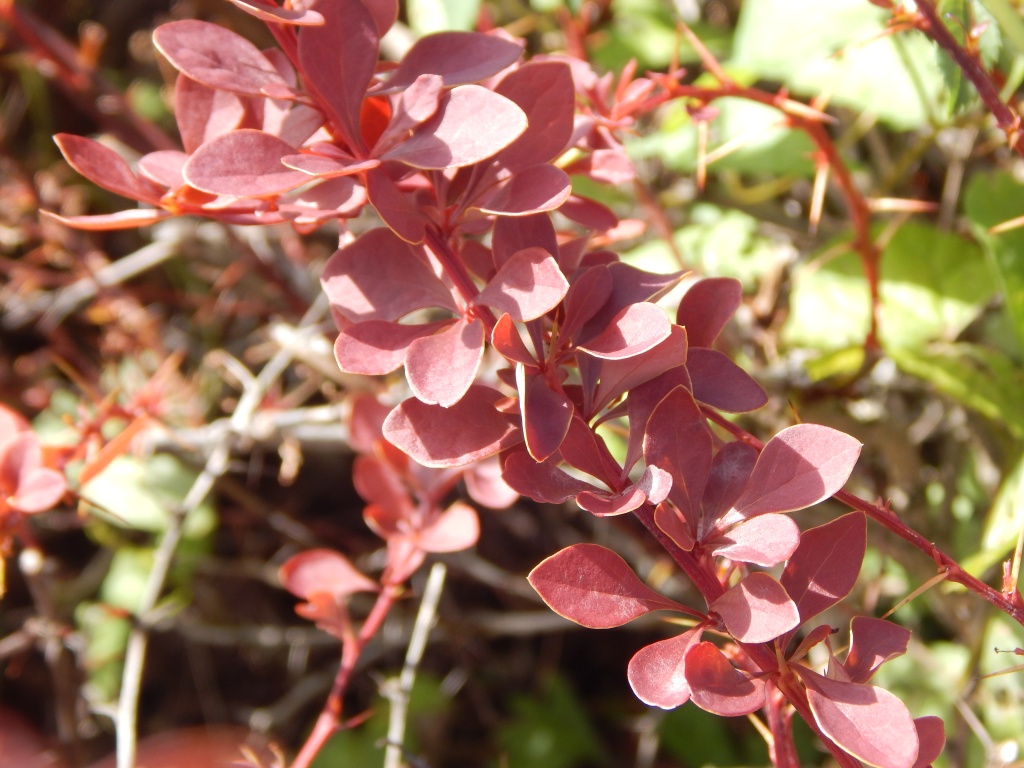
The last picture is probably Japanese Barberry.
See also
There has been much discussion about the inclusion of several other species also called barberries. They are now generally called [219] Oregon Grapes and are in the separate species Mahonia.

Pingback: [219] Mahonia aquifolium, Oregon Grape | The Species of Britain